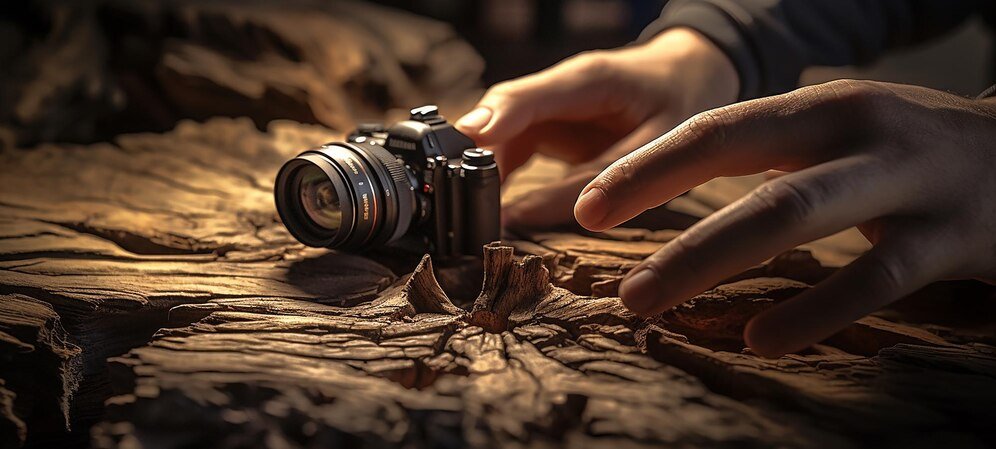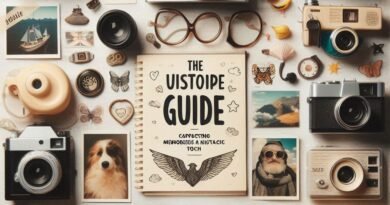Demystifying Aperture: The Secret to Unlocking the Creative Potential of Photography
Through the lens of a camera, photography is a potent medium for capturing moments, emotions, and tales. Whether you’re an experienced photographer trying to push the frontiers of creativity or a beginner learning the fundamentals, knowing how to unleash your creative potential will greatly improve your abilities and vision. This in-depth manual explores the methods, approaches, and frame of mind required to transform your photos from ordinary snapshots into captivating visual stories.
Understanding Your Gear
Every photograph starts with the equipment that was used to take it. Being familiar with your equipment is crucial to being a proficient photographer, whether you use DSLRs for their versatility or smartphone cameras for their ease of use. Start by being familiar with the basic settings on your camera, such as the ISO, aperture, shutter speed, and focal length. Every parameter affects the way light interacts with your subject, giving you the ability to adjust motion blur, depth of field, and exposure to get the right results.

Examine the subtle differences between various lenses and accessories by going beyond their technical details. Telephoto lenses crisply and precisely bring far-off subjects closer, while wide-angle lenses are best at capturing sweeping landscapes and architectural details. Macro lenses provide a window into a world that is frequently missed by revealing minute details in small-scale subjects. Playing around with different gear gives you the ability to adjust to a variety of shooting situations and find fresh viewpoints that enhance your images.
Mastering Composition Techniques
Visually captivating photography is built on composition, which guides the viewer’s gaze through the image and conveys a story. While following conventional guidelines like the golden ratio or rule of thirds can result in harmonious compositions, don’t be afraid to defy these guidelines for a more striking visual effect. Examine negative space to emphasize the existence of the topic, symmetry to balance items within the frame, and leading lines to direct attention to the main point.
Try a variety of perspectives and angles to fully appreciate the impact of perspective. When capturing familiar subjects from above, a bird’s-eye view presents a fresh viewpoint, while a low angle can highlight drama and grandeur. Include depth and context by framing your subject in natural components like windows or archways, which encourage people to look past the image’s surface. Recall that composition is about taking viewers on a visual trip that arouses feelings and piques their curiosity, not just about placing things in a certain order.
Embracing Light and Shadows
The most important component of photography is light, which affects texture, mood, and visual narrative. Understanding light’s characteristics and how it interacts with your environment is essential to mastering it. Natural light provides warmth and realism, creating gentle shadows that improve both landscapes and faces. Try different things during the golden hours of dawn and dusk, when soft light produces dramatic, long shadows and a mystical atmosphere.
Alternatively, use artificial lighting sources like strobes or continuous lights to your creative advantage. With the help of these tools, you may precisely highlight textures and curves by shaping light and shadow. Use rim lighting to provide a halo effect that isolates your subject from the background, or experiment with backlighting to silhouette figures against colorful skies. Knowing how to work with light changes everyday situations into remarkable visual stories that you can use in every shot to evoke emotion, drama, and setting.
Exploring Different Perspectives
Innovation and inquiry are essential to the photographic process because they help artists uncover fresh viewpoints and subvert accepted ideas. Try experimenting with different perspectives to give well-known themes new life and turn ordinary settings into visually compelling stories. Use close-up photography to capture personal nuances, highlighting patterns and textures that are frequently missed by the unaided eye.
Never be afraid to experiment by using underwater or aerial photography to push the boundaries. Drones provide an aerial perspective of cityscapes and landscapes, highlighting symmetry and patterns from an angle not available to onlookers on the ground. Similar to this, underwater photography captures marine life and aquatic habitats with clarity and precision, transporting viewers to a world of vivid hues and ethereal beauty. Accept the liberty to investigate many viewpoints, enabling your imagination to bloom without boundaries or restrictions.
Telling a Story Through Imagery
Through visual storytelling, photography does more than just record things; it tells stories, arouses feelings, and starts conversations. Whether it archives the grandeur of natural landscapes, examines the complexities of human expression, or catches fleeting moments of delight, every photograph has the ability to tell a story. By concentrating on topics that align with your interests and principles, you may hone your narrative voice while letting your images convey your unique viewpoints and experiences.

To improve the storytelling effect of your photos, take into account the background information around your subjects, such as alterations in the environment or cultural customs. Include photojournalistic elements by documenting unscripted emotions and candid moments to give viewers a genuine look into a range of communities and lifestyles. By adding layers of meaning to your photos through symbolism and metaphor, you can compel people to consider and interact with your work on a deeper, more meaningful level.
Cultivating Your Creative Vision
Photography creativity is more than just technical skill; it also includes having a distinct viewpoint, being open to trying new things, and being willing to push the creative envelope. Develop your artistic vision by immersing yourself in mediums other than photography; consider the inspiration of architecture, music, literature, and painting. Investigate several genres and styles, such as conceptual photography that questions preconceptions and ideologies and minimalist photography that stresses elegance and simplicity.
Push yourself to try out novel methods and strategies, accepting that both success and failure are essential components of the creative process. Work together with other photographers to share ideas, provide feedback on each other’s shots, and obtain new insights into your own work. Participate in workshops, exhibitions, and photography festivals to keep up with the latest developments in the industry. This will help you to modify and refine your artistic vision over time.
FAQs About Unlocking Creative Potential in Photography
Q: How can I overcome creative blocks in photography? A: In any creative endeavor, creativity obstacles are inevitable. To see things from a different angle, consider taking a vacation, seeing new places, or working with other photographers.
Q: What role does post-processing play in enhancing creative photography? A: Photographers can refine their shots and highlight creative components like color, contrast, and atmosphere via post-processing. It’s a useful instrument for improving artistic expression.
Q: How can storytelling enhance the impact of my photographs? A: Your photos get depth and significance when you tell a story, which makes them more interesting and memorable. Concentrate on catching moments that evoke strong feelings or present an interesting story.
Q: What ethical considerations should I keep in mind when photographing people or sensitive subjects? A: Get permission before taking pictures of subjects to respect their privacy and dignity. Recognize cultural sensitivities and refrain from sensationalizing or taking advantage of weaker people or groups.
Conclusion
A voyage of experimentation, self-discovery, and exploration is required to fully realize the artistic potential of photography. Through equipment knowledge, composition technique mastery, and a willingness to embrace creativity, you can take your photography from good to great. Recall that the key is telling compelling visual stories that connect with your audience in addition to simply taking pictures.




